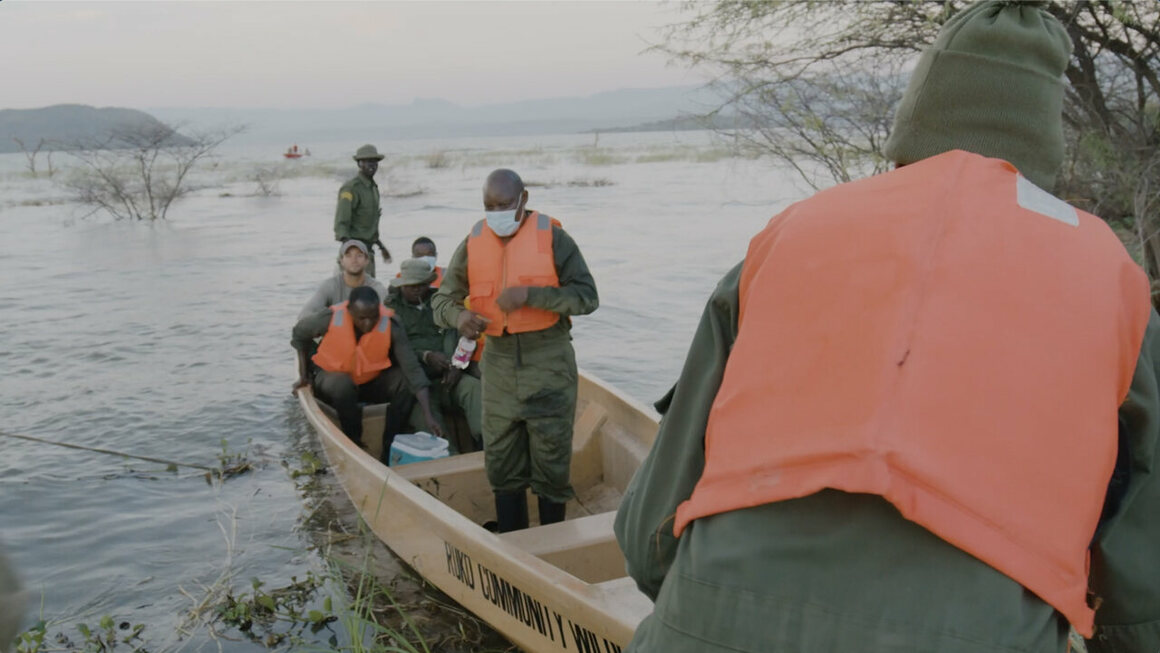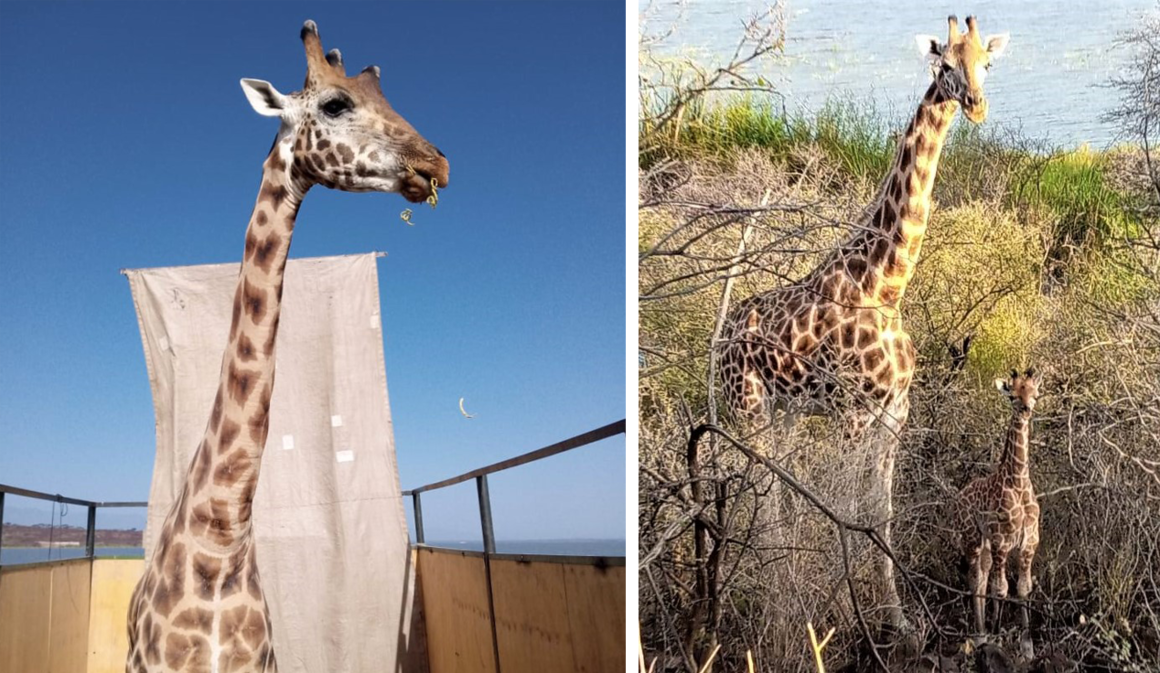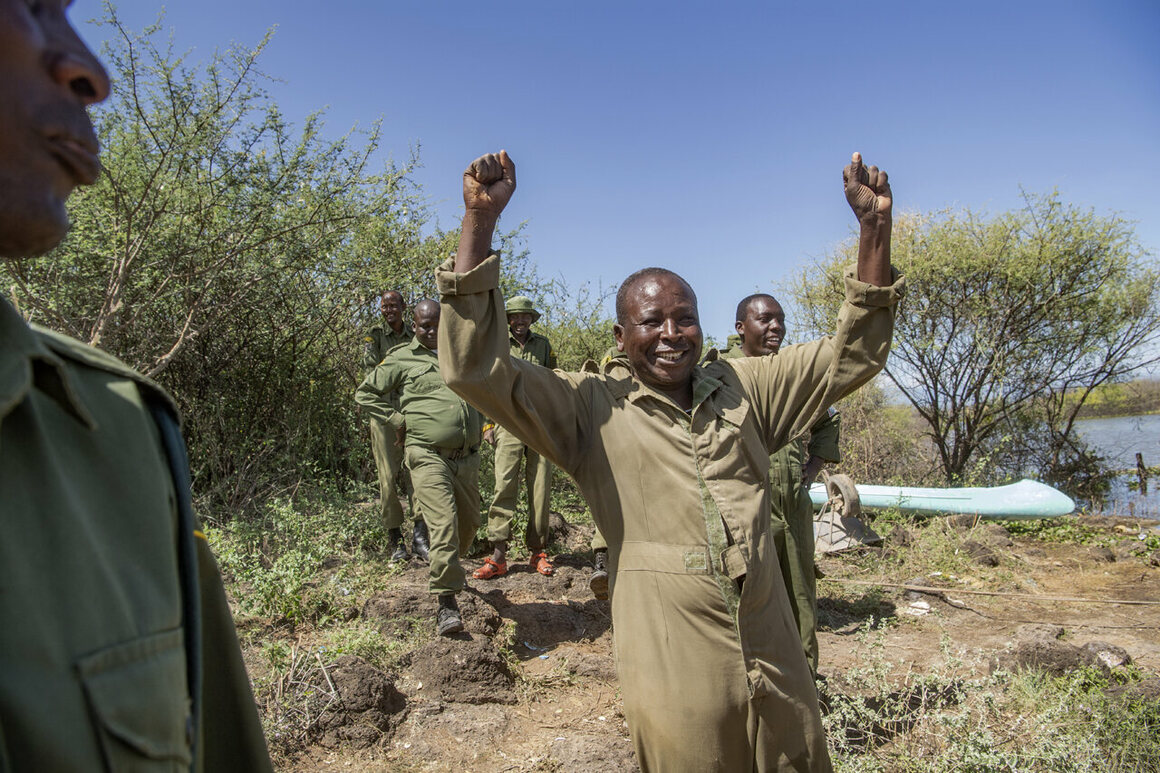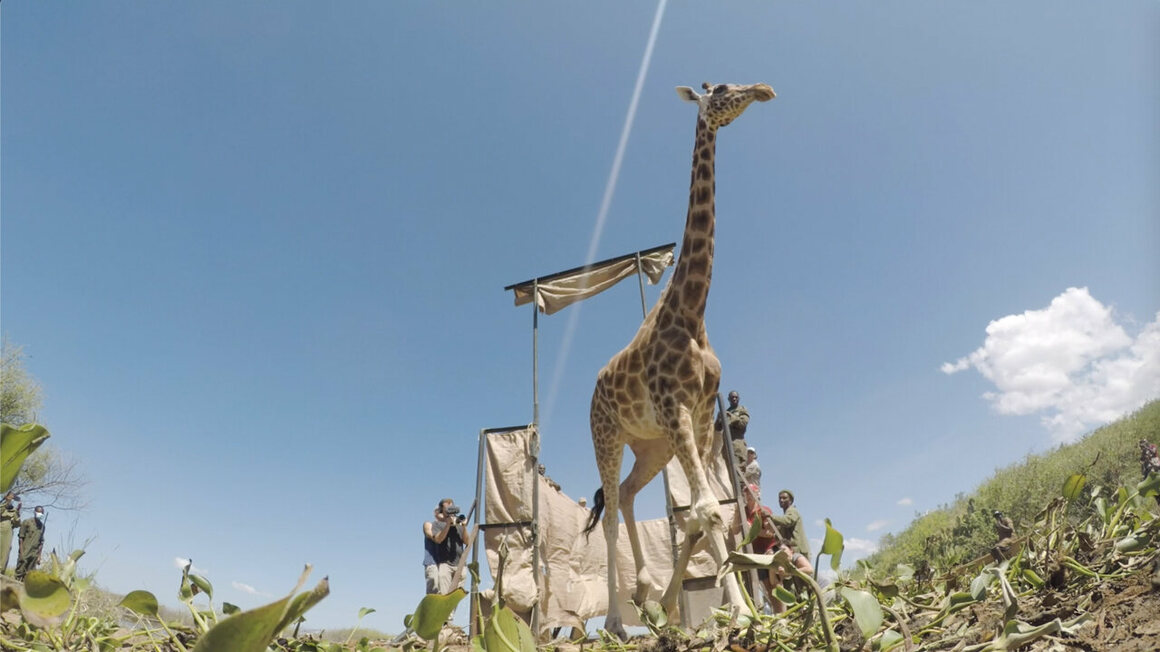The Great Kenyan Giraffe Rescue
On a sunny day at Kenya’s Lake Baringo, a barge floated gently by. Its main passenger calmly munched on his favorite snack of acacia seed pods. At about 16 feet tall, he could easily peer around to take in his watery surroundings. But this was not some idyllic pleasure cruise. This trip, on January 27, 2021, was a rescue mission, to save Lbarnoti, a Rothschild’s giraffe, from floodwaters gradually rising around Longicharo Island, where he and some fellow ruminants had lived for a decade.
Lbarnoti was not the only one to get this treatment. In December 2020, two females, Asiwa and Pasaka, made the same trip, one at a time. They had all been carefully transferred by American-based nonprofit Save Giraffes Now in collaboration with Kenya Wildlife Service, the Northern Rangelands Trust, and local members of the Ruko community. Another six animals remain on the island.
The long-necked grazers are extremely challenging to move around, according to David O’Connor, president of Save Giraffes Now, who was present at the first rescue. Unlike elephants, rhinoceroses, and lions, who can be sedated while being transported, giraffe physiology makes this strategy risky for the animals. “Once they’re down and horizontal, which is not a natural position for them, potentially they could choke on their own saliva. Or because of their unique blood flow system, basically their brain could explode because of the high pressure of the blood going to the brain,” says O’Connor. “And how do you get the tallest creature on Earth across a mile of open lake to the mainland?”
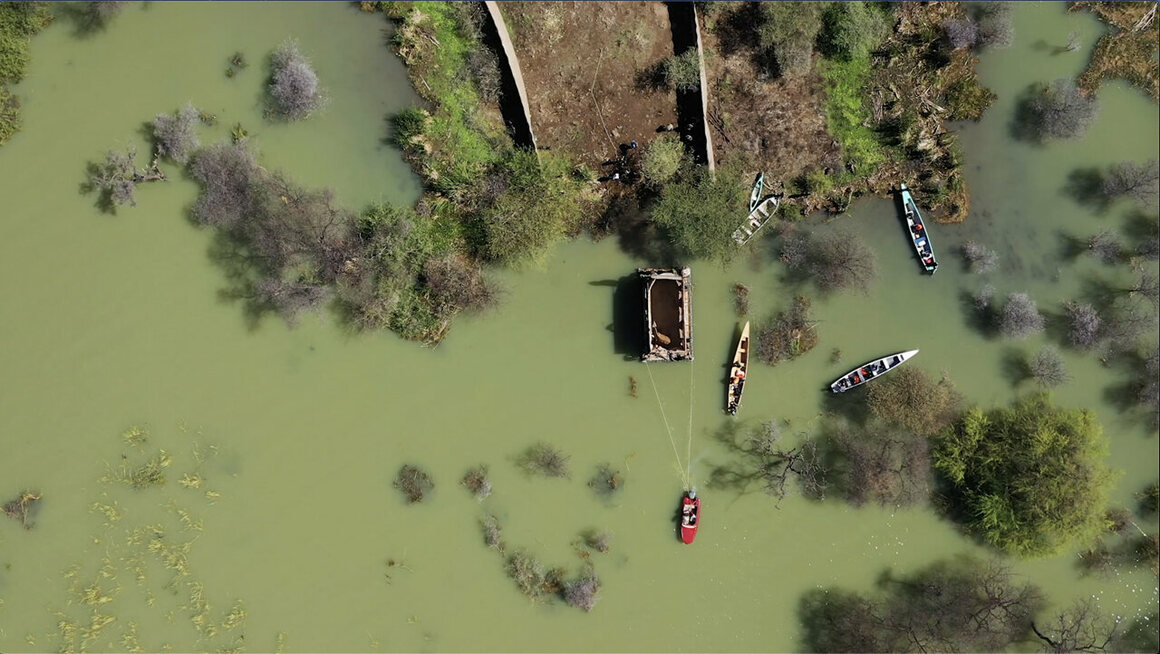
The solution was a custom-built steel barge. Made by the Ruko community, it was specifically engineered to carry a tall creature weighing as much as 2,600 pounds, with a rectangular steel structure with reinforced sides atop a series of empty steel drums. ”Our hope all along had been not to tranquilize the giraffe at all, but really try to move them, with the amazing team on the ground, to slowly train them to be comfortable on the barge,” says O’Connor. The training is painstaking, involving food such as mangoes and acacia seed pods, and acclimating the giraffes to the barge. With Lbarnoti, the conservationists were able to lure him in voluntarily. Boats then gently pulled the barge an hour-long ride, past crocodiles and hippopotamuses. He arrived safely at the mainland sanctuary of the Ruko Community Wildlife Conservancy, a protected wildlife reserve, where he was reunited with Asiwa and Pasaka (both of whom actually had to be blindfolded and gently sedated for the trip).
There are significant reasons for all this effort. Rothschild’s giraffes are a subspecies—not only one of the tallest of their kind, but also one of the most endangered populations. They look different, too. They have five, nubby horn-like ossicones on their heads (other giraffes have only two), and they appear to be wearing white socks, since their markings fade halfway down their legs. Named for zoologist Lord Walter Rothschild, who observed them in the early 1900s (and founded the Natural History Museum at Tring in England), they once roamed in large numbers across the whole Western Rift Valley, where Lake Baringo is located, in Kenya and into Uganda. But in the mid-1900s, they disappeared from the area due to drought, loss of habitat, and poaching. Today, less than 3,000 are left in the world, with only about 800 in Kenya.
In 2011, eight Rothschild’s giraffes were reintroduced on Longicharo Island, originally an isolated, rocky peninsula lush with acacia trees, to try to increase their population away from poachers. But this past season’s intense rainfall saw water levels rise as much as six inches per day, cutting the area off from the mainland completely. The need to get the giraffes off the island is urgent. What was once 100 acres of habitat had shrunk to one or two acres, and food sources had grown scarce. O’Connor says, ”They’re a little bit skinnier than a normal giraffe…. With the dry season, there’s absolutely no food, so they’re depending 100 percent on supplemental feeding by the team.” With one percent of the Kenyan population on the island, each rescue is important. “Giraffes are undergoing a silent extinction, and each one matters greatly to the survival of these animals,” O’Connor adds.
“We must finish these rescues as quickly as possible,” says Susan Myers, founder and CEO of Save Giraffes Now, in a press release. There are plans to move two more female giraffes, depending on weather, staffing, and finances. The final move of the remaining four, including two calves, is hoped for in March 2021. The work is all part of a long-term plan. “ Once we rescue them, that’s not the end of it,” O’Connor says. “That’s actually just the beginning of trying to repopulate the entire Western Rift Valley with this type of giraffe, where they became locally extinct 70 years ago.” Watching Lbarnoti’s graceful gait on the other side of his trip makes one hope that many more generations will nimbly follow.
